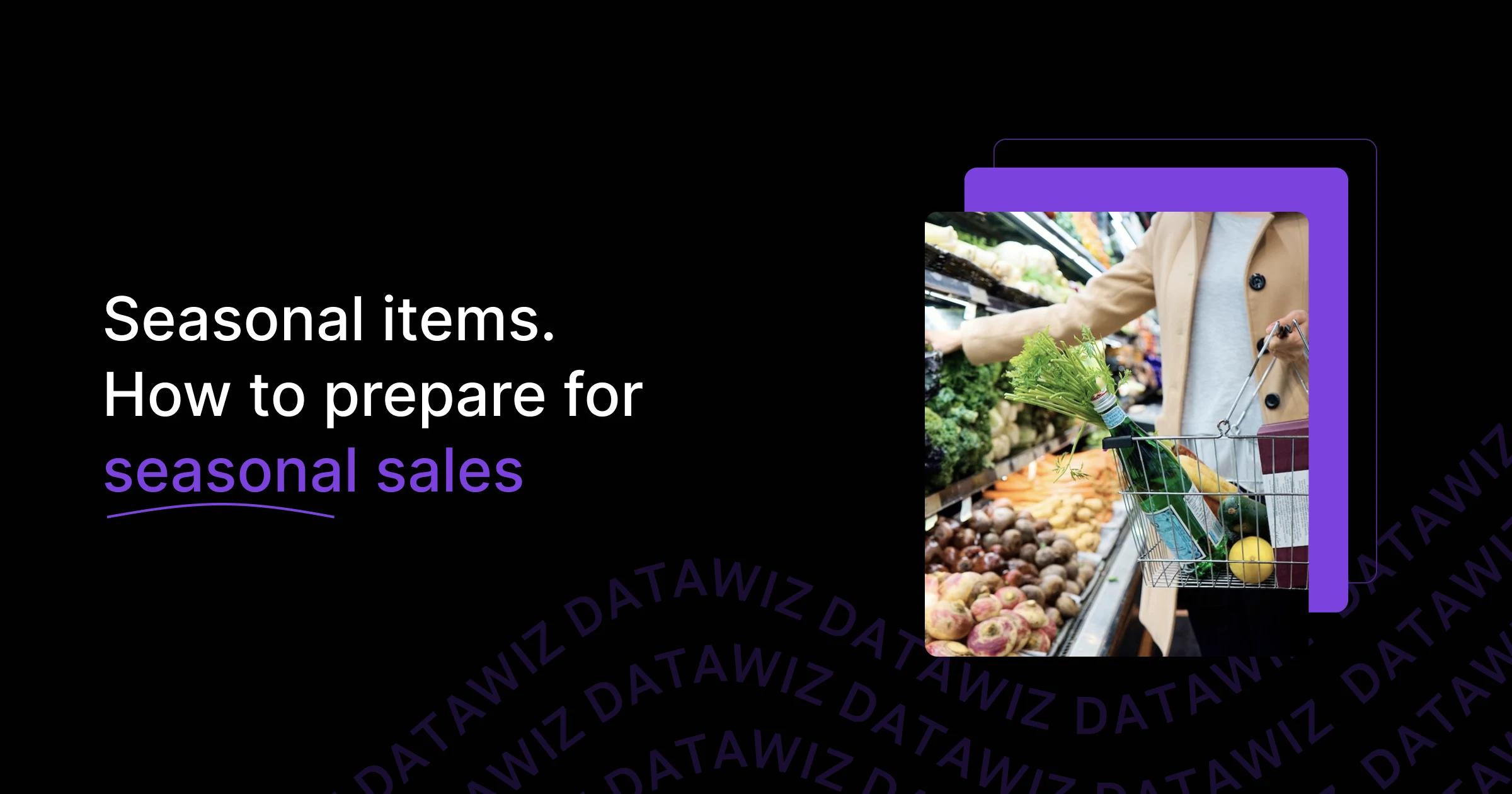Have you noticed any changes in your shopping basket over the course of the year? Or how often do you buy toys for your Christmas tree? Consumer purchasing activity is not stable throughout the year; this can only be said about basic product groups such as bread, salt, diapers, etc. Even a basic commodity such as water sells much better in warm weather, which is completely logical. Demand varies depending on the season, weather, holidays, or general trends which retailers must account for in their planning. For these reasons, every business needs to clearly understand how demand for its products fluctuates and how it can improve the situation.
What are seasonal goods?
Seasonal goods are products for which demand fluctuates significantly depending on the time of year, holiday periods, or certain events. Their appeal to consumers is temporary, peaking during a certain season, and outside of that season, demand drops sharply or disappears completely.
Seasonal inventory is the volume of seasonal goods that a retailer purchases and stores to meet expected demand during the peak period. This is a strategic reserve that is formed in advance to avoid shortages during the active sales season. Seasonal inventory management includes demand forecasting, procurement planning, storage organization, and sales control.
The key difference is that seasonal goods are the type of product itself that has seasonal demand, while seasonal inventory is the specific quantity of these goods in the warehouse or on the sales floor. Effective seasonal inventory management allows retailers to maximize profits during peak seasons and minimize losses from unsold inventory.
How Seasonal Changes in Consumer Behavior Shape Your Sales
Various events, holidays, and weather conditions change the products that consumers pay attention to. In general, the contents of shopping carts change significantly throughout the year. Understanding these changes is key for retailers to effectively plan their product range, marketing campaigns, and even pricing policies.
Changing the needs and priorities
As the seasons change, so do shoppers' basic needs and priorities. For example:
- In summer, people look for light clothing, outdoor recreation items, beverages, and ice cream. Their purchases are often focused on active recreation and staying cool.
- In autumn, there is growing demand for warm clothing, school supplies, and household goods related to preparing for winter (e.g., canning).
- In winter, the focus shifts to holiday goods, gifts, warm clothing, heaters, and winter sports goods.
- In spring, there is demand for gardening and vegetable gardening goods, light clothing, picnic goods, and wardrobe updates.
These changes in needs directly affect sales of various product categories, creating peaks and troughs.
How seasons affect emotions and impulse buying
Seasons have a powerful emotional and psychological impact on shoppers. For example, in the run-up to New Year's Eve or Christmas, people are in high spirits, prone to emotional purchases, searching for gifts, and creating a festive atmosphere. This stimulates sales of decorative items, premium food items, and souvenirs. However, in the off-season, when there are no major events, consumers may be less inclined to make impulse purchases, preferring rational choices.
How and when to plan purchases for the new season?
Effective purchasing planning is one of the most important aspects of successful retail operations. It determines the product range matrix, the quantity of different types of products in stock, and future customer impressions of the store.
Key Steps to Successful Seasonal Procurement
1. Analysis of previous periods and seasonal demand forecast.
- Historical data: analysis of sales of similar products in previous seasons. Which items were bestsellers? Which, on the contrary, did not sell well? Which promotions were effective?
- Market trends: research into new trends, emerging consumer preferences, analysis of competitor activity. For fashion retail, this could mean tracking global fashion shows; for gastronomy, it could mean new diets or popular products.
- Macroeconomic factors: inflation, currency exchange rates, and income levels. These factors directly affect purchasing power.
- Forecasting: rely on your data. It is advisable to analyze the sales dynamics of specific SKUs during this period and track changes over the past few years.
The “Category Card” report allows you to:
→ Compare the sales dynamics of product groups from previous years.
→ Determine which categories are selling well in a particular season and which ones should be reduced or removed.

2. Building the Right Assortment for the Season
- Based on demand forecasts, a preliminary list of goods to be purchased is compiled.
- The ratio between the basic product range (goods sold year-round) and seasonal new items is determined.
- Product categories, size ranges (for clothing/footwear), taste preferences (for gastronomy), etc. are taken into account. The relevance of the product assortment in accordance with the region of location (in the case of large retail chains) is also taken into account.
→ Highlight groups A, B, and C — this is the basis for not purchasing an excess of slow-selling goods and focusing on profitable SKUs.
→ In combination with the XYZ report, this report will help you create the ideal assortment matrix.

3. How to Choose and Negotiate With Seasonal Suppliers
- Select suppliers who can offer the right assortment, quality, volumes, and delivery terms.
- Negotiate prices, payment terms (deferred payment), delivery times, possible volume discounts, and terms for returning unsold stock (if possible).
- It is important to consider the supplier's logistics capabilities and reliability.
At this stage, it is convenient to use the “Supplier Analysis” report, which is designed to analyze the key indicators of all suppliers (target indicators and their comparison, stock balances, safety and reliability analysis).
4. Order formation and placement
- Retailers finalize the order.
- Conclusion of contracts.
- Placing an order with the supplier.
5. Logistics and control
- Delivery planning: routes, transport, deadlines.
- Customs clearance (for imports).
- Control over timely delivery and quality of goods upon receipt.
Seasonal procurement timing (basic guidelines)
General rule: the longer the production and logistics cycle, the earlier the procurement. For imports, the deadlines are longer.
1. Summer season (June-August):
- Order: October-December of the previous year.
- Delivery: April-May.
- Reason: long production cycle for fashion and leisure goods, lengthy logistics for imports.
2. Fall season (September-November):
- Order: February-April of the current year.
- Delivery: July-August.
- Reason: Preparation for the “back-to-school boom” and increased demand for warm clothing/home decor.
3. Winter season (December-February):
- Order: April-June of the current year.
- Delivery: September-November.
- Reason: The most critical period due to high demand for holiday goods, gifts, and winter clothing. Long production cycles.
4. Spring season (March-May):
- Order: October-November of the previous year.
- Delivery: February-March.
- Reason: Start of the wardrobe renewal season, increased demand for gardening products.
Seasonal products and demand for them are another stage in the retail business. Successful sales require only preparation, analysis, forecasting, and flexibility. Everything becomes clear and understandable thanks to the right strategy based on real data.
Datawiz BI analytics reports are a source of valuable information for planning and decision-making.
 Novedades
Novedades





 ¡No se necesita tarjeta bancaria!
¡No se necesita tarjeta bancaria!